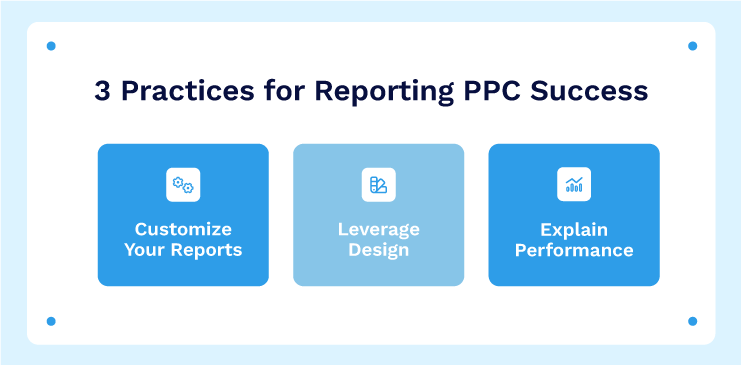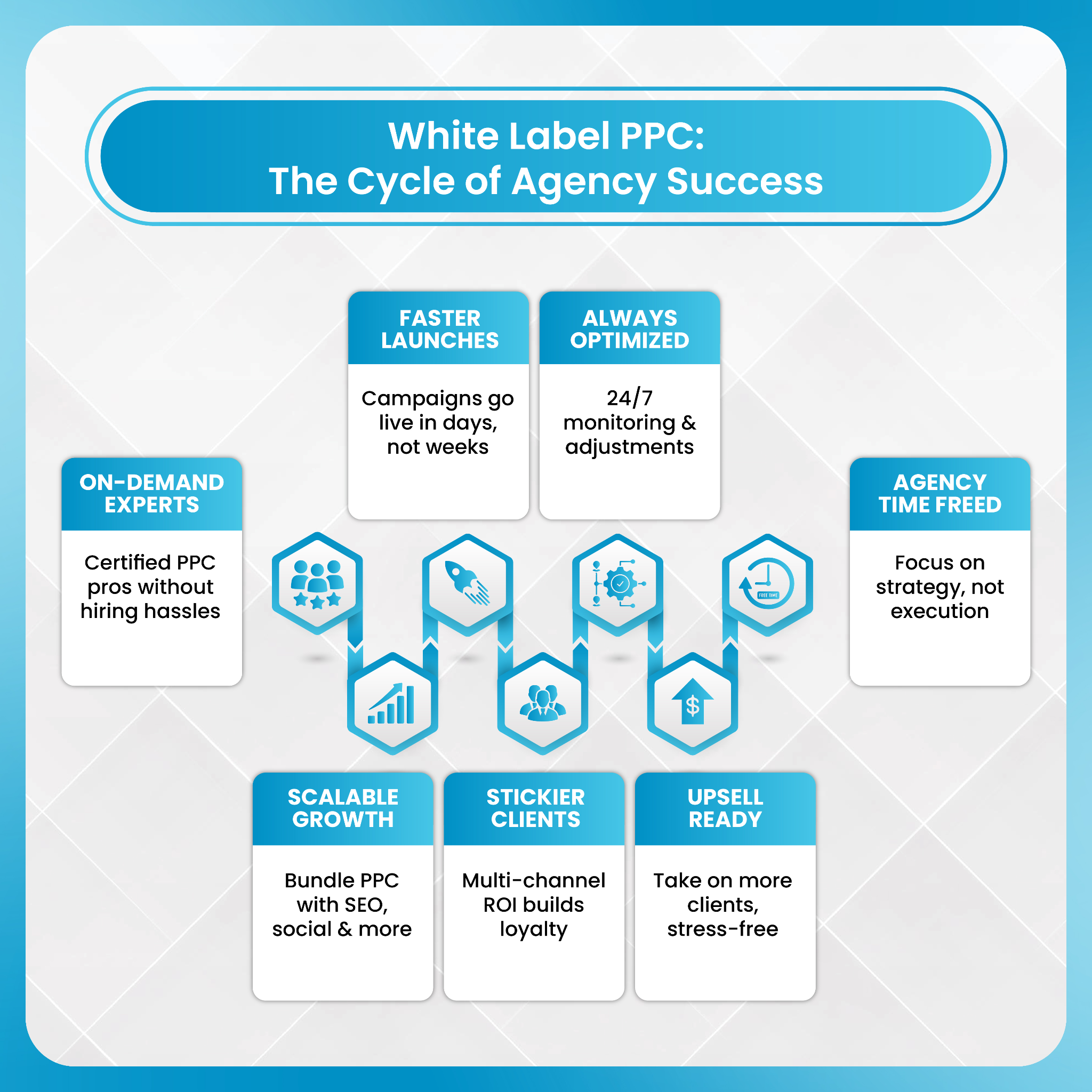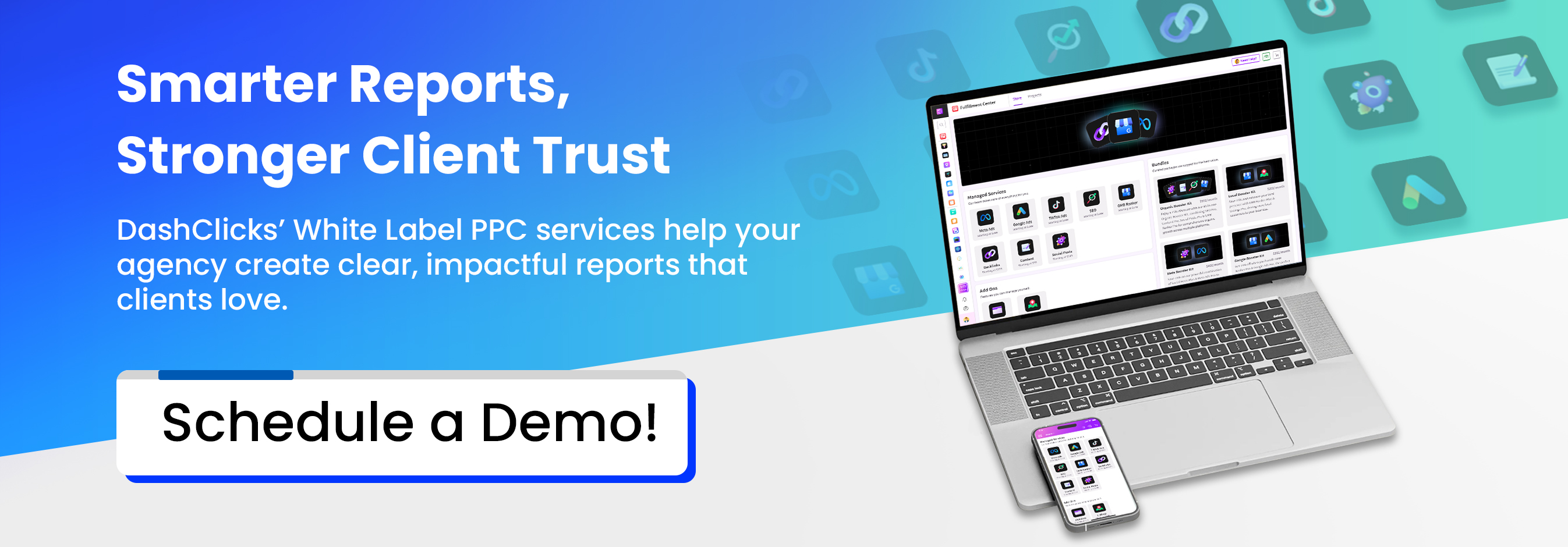Many digital marketing agencies have mastered campaign setup, creative testing, and bidding strategies for pay-per-click (PPC) advertising. Yet when it comes to reporting results back to clients, mistakes still happen. Even with advanced tools and systems, agencies often run into issues with measurement gaps, attribution errors, data delays, and miscommunication.
Working with a white label PPC provider is supposed to simplify operations. The partner handles the execution while the agency focuses on strategy and client relationships. But when it comes to reporting, the lines can blur—and that’s where problems begin.
In this blog, we’ll explore the most common reporting mistakes agencies make when partnering with a white label PPC agency and how to prevent them. Interestingly, more than half of marketing professionals today say PPC management is getting harder, yet only a small fraction have fixed their measurement problems. The gap between execution and accurate reporting is still wide—and costly.
Mistake #1: Relying on Raw Platform Output Without Context
One of the most common pitfalls agencies fall into—especially when managing multiple accounts—is treating the numbers in Google Ads or Meta Ads Manager as the final truth. It’s fast, it’s convenient, and it feels data-driven. But sharing raw platform data with clients without interpretation or context can easily misrepresent campaign performance.
At first glance, dashboards look trustworthy. They show impressions, clicks, conversions, cost per acquisition, and return on ad spend—all in one place. But what clients rarely see is the fine print: platform data often includes estimated, delayed, or modelled results. That means what you’re showing today may not reflect actual business outcomes tomorrow.
Why it matters:
- Modelled conversions can inflate numbers. Many ad platforms now rely heavily on machine learning to fill in gaps from privacy restrictions or tracking limitations. These modelled conversions are estimates—not confirmed results—and can make performance look better (or worse) than it really is.
- Conversion delays can skew short-term data. Depending on the product or service, a significant percentage of conversions happen several days after the click. Reporting too soon gives an incomplete view.
- Clients expect finality. When you present a dashboard snapshot as the monthly result, clients assume it’s accurate and final. Later corrections, even if justified, can erode trust.
Consider this scenario: You generate an end-of-month report on the 30th that shows 120 conversions. But if your typical account has a one-to-three-day conversion lag, roughly 30% of actual conversions might not yet be recorded. Within a few days, the real number could rise to 150. That 25% discrepancy can make your results appear weaker than they truly are—and that misrepresentation affects how your client perceives campaign value.
This mistake becomes even more pronounced when working with white label PPC partners. The partner might deliver platform screenshots or raw data tables on a fixed schedule. If your team forwards those numbers directly to the client without refining them, you risk miscommunication on both sides.
Pro tip for agencies:
- Add a data-refinement step before sending any report. Work with your white-label partner to clean, validate, and reconcile data across platforms.
- Label early numbers as “preliminary.” Make it standard practice to mark any report shared before full data maturation as a draft version.
- Educate clients on reporting cycles. Explain how conversion data matures over time, so they understand why final numbers are shared a few days later.
- Include a “data maturity” note or visual. For example: “Current data represents 90% of expected conversions; final reconciliation due on the 7th.”
This small process change not only ensures your reporting accuracy but also strengthens client confidence in your transparency and professionalism. When you refine the data before presenting it, you show that you’re not just forwarding numbers—you’re interpreting them. And that’s what separates a tactical PPC agency from a strategic partner.
Mistake #2: Misaligned Tracking Between Agency, Partner, and Client
When agencies outsource PPC management, they often overlook the importance of consistent tracking frameworks. If the agency, white label partner, and client each use different conversion definitions or tracking setups, results will never match.
What can go wrong:
- Duplicate or missing tags.
- Inconsistent look-back windows.
- Conflicting conversion definitions.
- Unlinked CRM or analytics systems.
Example: Your agency tracks “First-Time Purchases” as conversions, but your white label partner tracks all “Purchases.” When the numbers don’t align, you’re left explaining a discrepancy that could have been avoided.
Pro tip for agencies:
- Own the tracking setup from start to finish.
- Confirm naming conventions, tags, and conversion events across all parties.
- Document the tracking framework and review it together quarterly.

Image Source: AdClicks
Mistake #3: Failing to Clarify What “Conversion” Really Means
A conversion isn’t always a sale. It might be a lead form, a call, or a download. But not all conversions hold equal value. If you or your partner treats every conversion the same, you risk reporting vanity metrics that don’t represent real business results.
Why it matters:
- Clients might assume all conversions are high-value actions.
- You could celebrate higher numbers that actually bring less profit.
- Quality often matters more than quantity.
Example: One month you see 200 conversions, the next only 170. At first, that looks like a decline—but if the second month’s conversions were from qualified buyers, the campaign actually performed better.
Pro tip for agencies:
- Define conversion tiers (e.g., form fill, qualified lead, closed sale).
- Assign weighted values to each conversion type.
- Ensure your partner understands which conversions matter most.
Mistake #4: Presenting KPI Drops Without Explaining Macro Factors
PPC performance fluctuates for many reasons—algorithm updates, competition, seasonality, or budget shifts. When you report numbers without explaining why they changed, clients can easily misread the situation.
Why it matters:
- Clients see the outcome but not the context.
- Reporting a “CTR down 10%” without explanation looks like failure even when it’s a strategic move.
- Context protects credibility and builds trust.
Example: A campaign shifts 40% of the budget to a new region. Clicks drop, but cost-per-acquisition improves. If you only show “clicks down,” the client misses the full picture.
Pro tip for agencies:
- Include a “Performance Context” section in each report.
- Get your white label partner’s input on strategy or algorithm changes.
- Use that context to turn KPI shifts into meaningful insights.
Mistake #5: Ignoring Data Latency or Conversion Lag
Data doesn’t always appear instantly. In many campaigns, conversions can take days or even weeks to show up. Reporting too early can lead to inaccurate performance numbers.
Why it matters:
- Late conversions make early reports look weaker.
- Over time, this erodes client confidence.
- Partners may optimise based on incomplete data.
Example: You report 120 conversions on the 30th, but by the 7th of the next month the real total is 150. That 25% gap damages credibility.
Pro tip for agencies:
- Add a “lag adjustment” section showing preliminary and final results.
- Delay formal reporting by a few days to allow full data capture.
- Ask your white label PPC agency to provide notes on conversion delays.
Mistake #6: Over-reliance on Platform Modelling Without Transparency
Ad platforms now rely heavily on data modelling to fill in conversion gaps—especially after privacy updates. These models can inflate results compared to what’s verified in a client’s CRM.
Why it matters:
- Clients often track real sales in their CRM.
- Platform-reported revenue can differ significantly from verified data.
- Without transparency, you appear unreliable.
Example: Your partner reports a return on ad spend (ROAS) of 8× from Google Ads, while the client’s CRM shows only 4×. Without context, that looks like an error.
Pro tip for agencies:
- Present both platform and verified CRM numbers.
- Clearly label modelled vs. actual conversions.
- Educate clients on why discrepancies exist and how they’re managed.
Agency Tip: If you're using DashClicks, their CRM software lets you validate platform conversions with actual lead and sales data—making reporting far more reliable.

Mistake #7: Reporting Without Segmentation, Attribution, or Funnel Depth
Basic reports focus on clicks, conversions, and CPA. That’s fine—but it ignores the bigger picture. Smart agencies go deeper by analysing segments, attribution paths, and funnel stages.
Why it matters:
- Shallow reporting hides opportunities and threats.
- You can’t identify where high-value customers come from.
- Clients miss insights about long-term value or repeat purchases.
Example: You report a 15% drop in cost per acquisition but don’t note that lead quality fell. The client discovers lower-quality leads later and questions your reporting integrity.
Pro tip for agencies:
- Segment data by device, audience, and creative type.
- Track assisted conversions and multi-touch journeys.
- Include funnel metrics like lead-to-sale rates and lifetime value.
Mistake #8: Using One-Size-Fits-All Reporting Templates
Rebranding your partner’s standard report and sending it to every client might save time—but it weakens your agency’s value. Clients want insights tied to their business, not a generic PDF.
Why it matters:
- A generic report shows no understanding of the client’s goals.
- The metrics may not reflect their true success indicators.
- It makes your agency look less strategic.
Example: For an e-commerce client, you include “New Conversions” but ignore “Repeat Purchases.” The client sees the gap and assumes you’re not tracking customer retention.
Pro tip for agencies:
- Identify the top 3–5 metrics that align with each client’s goals.
- Ask your white label partner to provide supporting data for those KPIs.
- Use the partner’s report as a base, but add your own insights and analysis.
Mistake #9: Not Defining Reporting Responsibilities
Many agencies assume the white label partner will handle reporting. The partner assumes the agency will. The result? Missed deadlines, inconsistent formats, and unhappy clients.
Why it fails:
- No clarity on who prepares what or when.
- Reports go out late or contain unverified data.
- The client questions the agency’s professionalism.
Example: The partner sends raw data on the 2nd of the month. The agency reviews it late and sends the report on the 10th, after the client has already asked for it twice.
Pro tip for agencies:
- Set clear reporting roles:
- Partner: provides unbranded raw data by a fixed date.
- Agency: reviews, adds insights, brands, and sends to the client.
- Both: meet monthly to review accuracy and timelines.
- Create an SOP that documents this workflow for every client.
Mistake #10: Treating Reports as Compliance Instead of Strategy
Too often, agencies view monthly PPC reports as tasks to check off. But they’re opportunities to show strategic value. Reports should spark conversation, not end it.
Why it matters:
- Clients want direction, not just data.
- White label partners handle execution; you own the interpretation.
- Turning data into strategy strengthens client retention.
Example: Instead of writing, “CPA dropped by 12%,” say, “CPA dropped by 12% after refreshing creatives. Next, we’ll test look-alike audiences to expand conversions and aim for a 20% volume increase next month.”
Pro tip for agencies:
- Add “What this means” and “Next steps” sections to every report.
- Ask your partner for performance notes and integrate them into your recommendations.
- Use reports as springboards for new tests, strategies, and upsell conversations.
How White Label PPC Services Help Agencies Build Better Reports?
Partnering with a white label PPC provider isn’t just about outsourcing campaign management—it’s about gaining access to deeper data, cleaner insights, and a more consistent reporting framework. For many agencies, reporting is where client relationships are won or lost, and that’s exactly where white label partnerships can make a measurable difference.
Here’s how white label PPC services help elevate your reporting process:
- Centralised Data Management: White label platforms like DashClicks consolidate performance metrics from Google, Meta, and other ad platforms into a single, unified dashboard. Instead of switching between multiple data sources, agencies can view every key metric in one place—saving hours of manual compilation and reducing the risk of reporting errors.
- Automated and Customizable Reports: Instead of building reports from scratch every month, white label partners provide automated templates that can be tailored to each client’s KPIs. This helps agencies deliver professional, branded reports that align with the client’s goals while maintaining speed and consistency.
- Deeper Insight Through Expert Input: A strong white label partner doesn’t just deliver data—they interpret it. They provide insights into performance trends, explain anomalies, and highlight optimisation opportunities that agencies can use to guide strategic conversations with clients.
- Consistent Accuracy and Timeliness: Since data collection and processing are managed by dedicated experts, reporting becomes more reliable. Agencies can set predictable reporting schedules and confidently deliver numbers that have been verified, reconciled, and formatted by specialists.
- Scalability Without Overload: As your agency grows, so does your reporting workload. A white label PPC agency allows you to scale without hiring additional analysts. You get the capacity to handle more accounts while maintaining the same quality and turnaround speed.

How DashClicks Helps Agencies Avoid PPC Reporting Mistakes?
DashClicks gives agencies full control over client reporting while simplifying collaboration with white label PPC partners. The platform’s automation and customisation features help you:
- Consolidate data from multiple ad platforms into one clean dashboard.
- Build custom client reports that reflect true business metrics.
- Automate conversion-lag adjustments and keep data current.
- Share dashboards securely with white-label partners for transparency.
- Deliver branded, easy-to-understand reports without manual work.
By streamlining tracking, analytics, and client communication, DashClicks lets agencies focus on strategy—not spreadsheet management. It helps you stay accurate, organised, and confident when presenting campaign results.
Conclusion – Elevating Your Agency’s Reporting with White Label PPC Partners
Accurate PPC reporting isn’t just about numbers—it’s about storytelling, transparency, and trust. Each mistake we’ve covered is avoidable when agencies stay proactive and intentional with their reporting process.
To recap:
- Don’t rely on raw platform data—add context and commentary.
- Align tracking across your agency, partner, and client.
- Define conversion values clearly and consistently.
- Provide explanations for KPI shifts and performance trends.
- Account for data latency and modelling differences.
- Customize every report for each client’s goals.
- Treat reporting as a strategic conversation, not a formality.
White label PPC partnerships can supercharge an agency’s capacity—but reporting remains your voice to the client. When handled with structure and insight, it becomes a tool for credibility and growth.



.svg)

.svg)
.svg)
.svg)
.svg)
.svg)

.svg)




.svg)
.svg)
.svg)
.svg)
.svg)